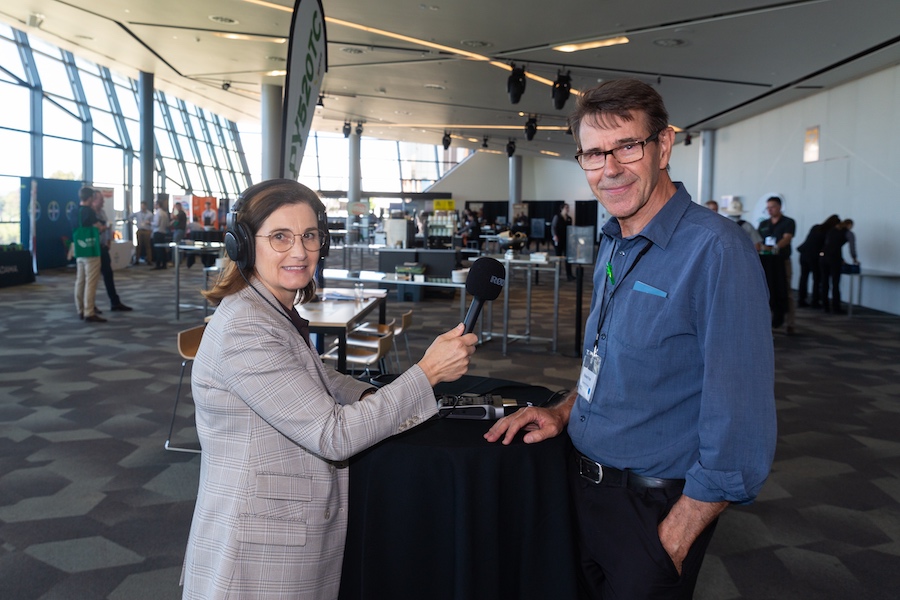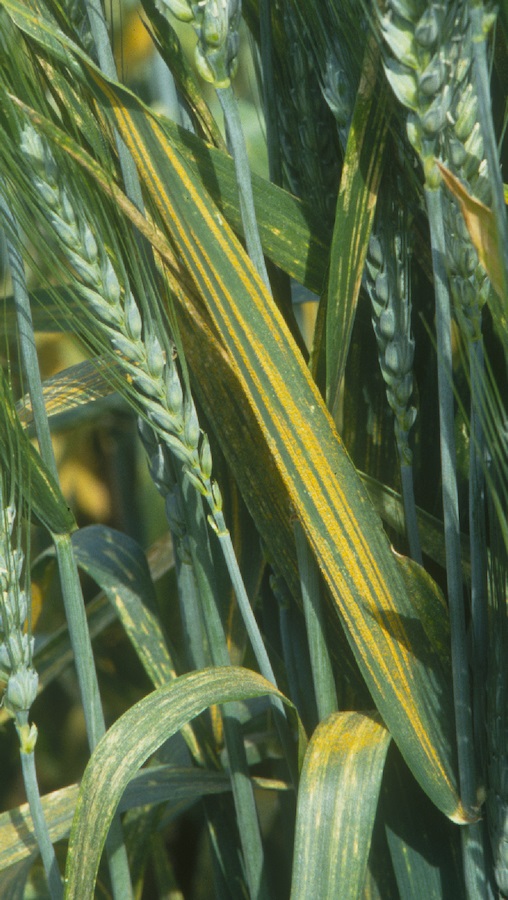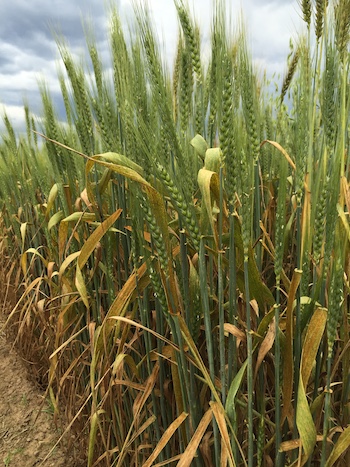The ambitious fourth phase of the Australian Cereal Rust Control Program (ACRCP) is complete and it has produced an impressive set of achievements. Phase 4 saw an emphasis on gene discovery work and on understanding the interactions between rusts and their cereal hosts. It also included a strong focus on adult plant resistance (APR) genes and their potential to deliver more-durable forms of resistance.
Wheat breeder Dr Russell Eastwood at Australian Grain Technologies says getting rust resistance right is a two-pronged process and the past investment hit milestones on both fronts.
“Rust control involves the kind of monitoring undertaken by the Plant Breeding Institute at the University of Sydney by Professor Robert Park and Dr Mumta Chhetri. This provides an understanding of the rust evolutions and incursions that are under way. In turn, this information informs strategies about the kinds of genes needed in cultivars. It also requires making new genetic discoveries to provide the genes needed to respond to rust threats,” Dr Eastwood says.
He adds that 2022 was the year that highlighted the value of this investment in genetic-based resistance to rust diseases.
In 2022, new stripe rust races (198 and 239) combined with wet conditions to produce high inoculum levels that reached epidemic proportions earlier in the season and that prevented growers getting to their crops to spray fungicides.
“Without rust resistance genes, crops would have failed in 2022,” he says. “It highlights that genetic resistance underpins the system.”
The work undertaken within the ACRCP was a collaborative and coordinated affair involving key research teams located nationally and internationally, particularly the University of Sydney, CSIRO, University of Adelaide and the International Maize and Wheat Improvement Center (CIMMYT).
The approach was paddock and outcome-focused, building on world-leading resources on both the gene discovery and pathogen monitoring fronts.
Gene discovery
The focus on genetics saw researchers clarify the molecular basis of resistance in ways that make a future step change in rust resistance possible. They split resistance into two overall categories and went a long way in understanding complex gene relationships and interactions.
The categories are all-stage resistance (ASR) genes (sometimes referred to as seedling resistance) and APR genes.
Phase 4 achieved a widening of the pool of resistance genes available to breeders. On one hand, this involved gene discovery work that identified and catalogued three new APR genes, eight new ASR genes, and homed in on five new genomic regions that contribute APR to leaf rust and stripe rust.
On the other hand, additional genes yet to be used in Australia were identified via offshore testing at rust hot spots in Mexico and east Africa. Two examples of these are the Yr5 and YrSP ASR genes, which provide resistance to a broad spectrum of stripe rust races. CSIRO teamed up with the University of Sydney, led by Professor Peng Zhang, and the John Innes Centre to isolate and clone Yr5, revealing that it encodes a classic immune receptor protein.
YrSP, a gene originally detected in wheat cultivar Spaldings Prolific, was also cloned and found to be a truncated version of Yr5. Then there’s Yr15, which was originally derived from wild durum wheat and was cloned by Israeli researchers. Both Yr5 and Yr15 have been protecting wheat crops abroad for many years, yet remain universally effective.
On the APR fronts, the team made several seminal contributions. Dr Evans Lagudah played a pivotal role defining the molecular basis of APR genetics. Dr Peter Dodds and Professor Robert Park helped define the molecular interactions between the plant and fungus that determine virulence. CSIRO’s Dr Rohit Mago also led a team that isolated the Sr2 genes and progressed work to isolate Lr46.
Dr Lagudah explains that APR genes have several characteristics that make them attractive to deploy in broadacre cropping. Most useful is the ability to provide a broad form of resistance that is usually effective against multiple races of rust pathogens while protecting those parts of the plant most responsible for yield.
However, he stresses that individual APR genes offer only a low level of resistance. Instead, they come into their own when certain combinations of APR genes are deployed together. Then, the resistance can become ‘additive’, meaning that the resistance from individual APR genes adds together and can then be used to achieve agronomically useful levels of protection.
Leaf rust on wheat. Photo: Robert Park
The APR genes Sr2, Lr34 and Lr46 all have been reported to have some additive effects.
“We think that Lr46 is the most-common APR gene present in bread and durum wheat globally,” Dr Lagudah says. “This is also a gene that is proving to work well in combination with other APR genes. For example, it combines with Lr78 to boost leaf rust resistance. However, it also combines with a Yr5A QTL – as well as undefined minor APRs – to boost stripe rust resistance.”
Over at the University of Adelaide, Dr Ian Dundas further demonstrated the technical feasibility of taking resistance genes from different sources and placing them together on the same chromosome so that they are co-inherited during breeding.
He used a technique called chromosome engineering to bring together (on to one chromosome segment) two ASR genes – Sr26 and Sr61. Both genes were cloned as part of the project and found to encode classic plant immune receptors. Both have been used individually in wheat cultivars for many years, yet both retain their effectiveness.
Dr Dundas’ proof-of-concept work highlighted one of the potential pitfalls of this approach. The resistance genes he targeted were sourced from tall wheatgrass (Thinopyrum ponticum) using conventional breeding methods that carried over additional DNA that caused a yield penalty. An extra round of chromosome engineering was required to remove excess tall wheatgrass DNA.
With the yield penalty issue solved, the combined genes have proven extremely effective, offering resistance to all stem rust isolates while proving compatible with high-yielding cultivars. CIMMYT is now interested in deploying this gene combination into its global wheat breeding program, which supplies countries where stem rust presents major production challenges.
“Over the life of Phase 4, we have facilitated the transfer of rust resistance genes to breeders by making appropriate germplasm available to them along with DNA markers,” Professor Park says.
“More than 950 adapted lines carrying 10 new ASR and 11 APR genes, singly or – in some cases – in combination, were generated by Professor Harbans Bariana and made available to breeders. Linked markers were developed for more than 20 resistance genes and made available to breeders and researchers alike.”
Monitoring
The Phase 4 program also improved understanding of how rust pathogens evolve and acquire virulence on resistance genes. This is one of the main targets of work at the University of Sydney, where Professor Park is the director of the ACRCP. He has conducted Australia-wide rust race analysis since 1988, processing more than 10,000 rust samples from growers’ fields. This work led to the identification of seven exotic wheat rust incursions. It also assessed the impacts of these incursions along with 270 additional new rust pathotypes.

Rust researcher Robert Park is interviewed at a recent GRDC Update. Photo: GRDC
The nationwide annual surveys of virulence against wheat cultivars provide insights into the performance of resistance genes and have been critical in understanding and predicting the responses of varieties to rust diseases. They also provide direction for breeders.
Over the years, this work has identified more than 160 new cereal pathotypes and demonstrated a clear increase in frequency of exotic rust incursion into Australia. His research group has also developed DNA markers to understand how rust pathogen populations have evolved in Australia over the past 100 years. Recently, that work came to include whole genome analysis.
Professor Park says the three types of rust (stem, stripe and leaf) are following different trajectories due to interactions between resistance genes, rust pathotype, incursions and, possibly, gene-by-environment effects.
“We’ve put a good lid on stem rust,” Professor Park says. “Of course, that could change very quickly with an exotic incursion.
“However, we haven’t had an exotic stem rust incursion since 1969, which has given breeders time to put together good gene combinations that provide strong resistance to stem rust. So, I would say we are in a pretty good position with stem rust. That strong genetic foundation meant that I received only one wheat stem rust isolate for all of Australia in 2021.” In contrast, the wheat industry lost $300 million due to stem rust in 1973.

Stripe rust on wheat. Credit: Robert Park
However, stripe rust is a completely different story, he says.
“Since stripe rust first arrived in 1979, we’ve had three more incursions, with the most recent in 2017-18. Each incursion had a massive impact on our varieties, which is why we had a huge problem with stripe rust in eastern Australia in 2022, which was likely one of the worst rust epidemics on record. We haven’t had the time to get the genetics right for stripe rust.”
Work over the years has highlighted that there is a layer of more-complex interactions occurring in the paddock between resistance genes, rust pathotype virulence, fungicides, yield and the environment. This has culminated in the formulation of important new insights about how to develop the right gene combination of both ASR and APR genes in ways that ensure yield benefits.
“Looking ahead, it’s all about getting interactions right,” Professor Park says.
The care taken and the level of expertise demonstrated across the ACRCP during Phase 4 has impressed breeders such as Dr Eastwood: “It is a really good community and the pre-breeders we work with – who monitor rust isolates and discover resistance genes – are the envy of the world. They have been very effective for a long time, providing lots of important genes and services.”
Dr Eastwood adds that AGT performs about 150,000 tests a year to look for specific genes in its breeding material. A big proportion of this testing relates to rust resistance genes that were sourced from pre-breeders working within GRDC’s rust genetics initiatives.
As a result, almost (if not) all of Australian wheat and barley cultivars have at least some resistance to each of the three rust diseases. The resistance saves the wheat and barley industries an estimated $1.1 billion per year.
More information: Evans Lagudah, evans.lagudah@csiro.au; Peter Dodds, peter.dodds@csiro.au; Robert Park, robert.park@sydney.edu.au


























































